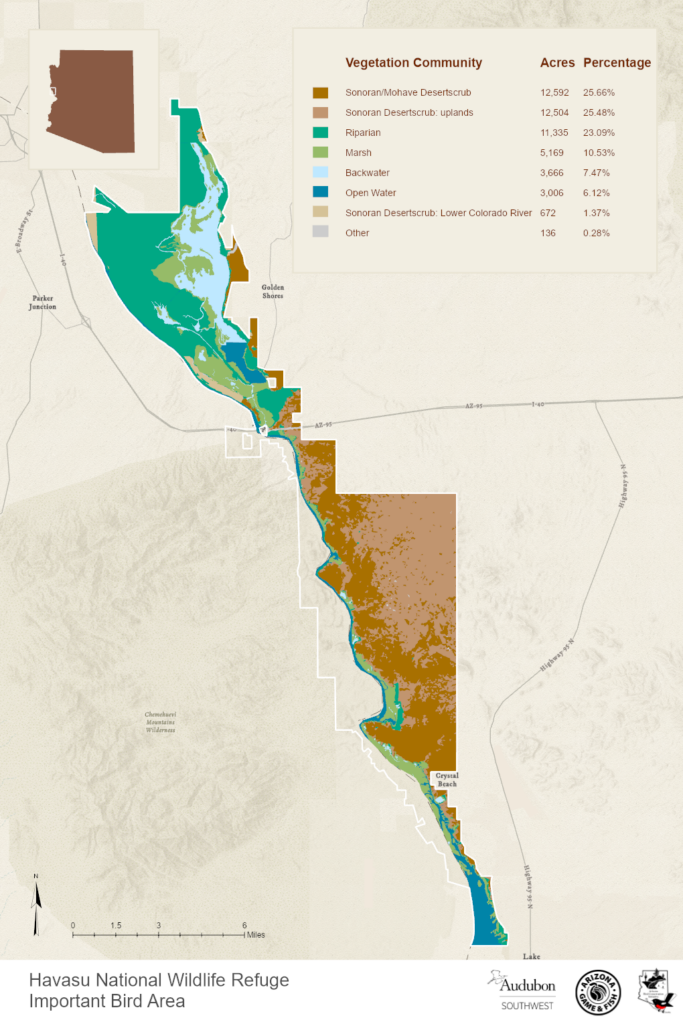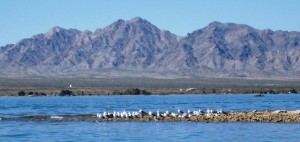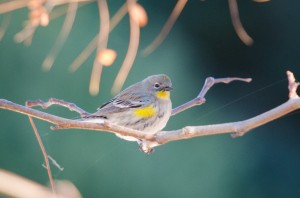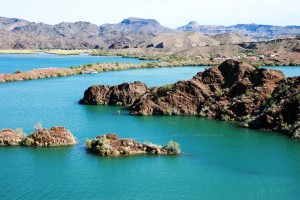 Continental IBA for Yuma Ridgway’s Rail
Continental IBA for Yuma Ridgway’s Rail
Size: 61.4 square miles, 39,281 acres
Identified: 06/2008
Visiting the IBA: The refuge office is in Needles, California. From Interstate 40, exit on J Street and go southwest (uphill) 0.6 miles. Turn right at the headquarters entrance sign and follow the signs. The office is in the back. Office hours are 8am-4pm Monday through Friday. Best time to visit is from late fall to early spring.
Havasu National Wildlife Refuge – Pintail Slough – Arizona Birding Trail
Site Description: The refuge protects 30 river miles and 300 miles of shoreline from Needles, California, to Lake Havasu City, Arizona. One of the last remaining natural stretches of the lower Colorado River flows through the 20-mile-long Topock Gorge. The 4,000-acre Topock Marsh depends on water from the Colorado River. 32 percent of the refuge is designated as wilderness.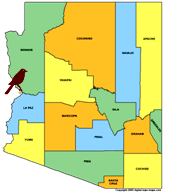
Birds: The refuge shelters thousands of Canada and Snow geese and ducks each winter. Western and Clark’s grebes raise their young in both Topock Marsh and Topock Gorge, early spring nesting California Black Rail, Yuma Ridgway’s (clapper) Rail, and Least Bittern can be heard and maybe seen if you take a canoe or kayak trip through Topock Gorge. Herons and egrets also nest in rookeries in the marsh.
Year-round: Sonoran desert; Gambel’s Quail, Anna’s Hummingbird, Burrowing Owl, Gila Woodpecker, Black Phoebe, Ash-throated Flycatcher, Verdin, Cactus Wren, Black-tailed Gnatcatcher, Curve-billed Thrasher, Phainopepla, Abert’s Towhee.
Breeding: White-winged Dove, Costa’s Hummingbird,Bell’s Vireo, Lucy’s Warbler, Yellow Warbler, Common Yellowthroat, Yellow-breasted Chat, Summer Tanager, Abert’s Towhee, Song Sparrow, Hooded Oriole, and Bullock’s Oriole.
Conservation Issues: Salt cedar, a tree originally from Asia, aggressively takes over disturbed areas along the Colorado River and native cottonwood and willow trees cannot compete. Strategies: Havasu NWR works to control salt cedar and re-establish native riparian forests. To protect floating nest birds, jet powered personal watercraft (PWC) are not allowed in backwaters off the main Colorado River channel for the 15-mile stretch from the Island/Castle Rock location, north to the Interstate 40 bridge, buoy line.
Maps of this Important Bird Area:
Mini Conservation Plan
Lake Havasu | Arizona Wildlife Conservation Strategy
Complete eBird.org Checklist of birds Reported for Havasu National Wildlife Refuge IBA
For an interactive map and habitat and land ownership analysis of this IBA visit the National Audubon IBA Map and select “Arizona” and then select this IBA
County: Mohave
Site Status: Identified 06/2008
Ownership: Federal
Criteria: B1; Continental; Species of Conservation Concern – Yuma Clapper Rail (95 individuals 2020)
D1 – Site Important to Special Status Avian Species – Federally listed Yuma Clapper Rail
D3 – Rare, Unique, or Exceptional Representative Habitat/Ecological Community: Marsh and River Slough
D4i –Significant Concentrations of Birds, >1% State population (D4ii:Waterfowl, 2000+)
Site Description: When the gates closed at Parker Dam in 1941, President Franklin D. Roosevelt created Havasu NWR to provide migratory waterfowl habitat. The refuge has shifted boundaries since then, including the addition of the Needles Peaks area in 1968. Topock Marsh, Topock Gorge, and Havasu Wilderness form three distinct areas. The passage of the Arizona Desert Wilderness Act in 1990 and the California Desert Protection Act in 1994, together designated 17,606 acres, or 32 percent of the refuge, as wilderness.
| Vegetation Description | Hectares |
| ACACIA GREGGI ASSOCIATIONS | 61.87412 |
| CREOSOTEBUSH – BURSAGE COMMUNITIES | 8667.815 |
| DALEA SPINOSA ASSOCIATIONS | 155.8731 |
| LAKE | 1432.557 |
| LARREA DIVARICATA – FRANSERIA DUMOSA ASSOCIATIONS | 513563.5 |
| MIXED PALOVERDE – CACTI COMMUNITIES | 1929900 |
| PALOVERDE – SMOKETREE ASSOCIATIONS | 2801.08 |
| POPULUS FREMONTI – SALIX – MIXED BROADLEAF ASSOCIATIONS | 104.4994 |
| PROSOPIS JULIFLORA – SALIX ASSOCIATIONS | 3636.868 |
| PROSOPIS JULIFLORA ASSOCIATIONS | 14341.37 |
| REED COMMUNITES | 547.95 |
| TAMARIX PENTANDRA ASSOCIATIONS | 47.24868 |
Ornithological Summary: The refuge shelters thousands of Canada and snow geese and ducks each winter. Western and Clark’s grebes raise their young in both Topock Marsh and Topock Gorge. Herons and egrets nest in rookeries in the marsh. Banding operations were conducted for a total of 650.83 net hours during the winter of 2005-06. There were 139 individual birds captured (0.21 per net hour) and 45 recaptures (0.069 per net hour) for a total of 184 birds captured. Eighteen species were captured, with 4 species accounting for 68% of all captures: ruby-crowned kinglet 37%, orange-crowned warbler 15%, Audubon’s warbler 8%, and Bewick’s wren (Thryomanes bewickii) 8%
Riparian Species: In 2005, the Havasu banding site (HAVA) was monitored during the winter season for the first time. This site is located on the Havasu National Wildlife Refuge at the southern end of Topock Marsh approximately 1.2 miles (1.5 km) north of the town of Topock, AZ. Area searches are conducted at each site during each of the 6 banding periods to account for species that may not be captured during standard mist-net operations.
Banding operations were conducted for a total of 650.83 net hours during the winter of 2005-06. There were 139 individual birds captured (0.21 per net hour) and 45 recaptures (0.069 per net hour) for a total of 184 birds captured. Eighteen species were captured, with 4 species accounting for 68% of all captures: Ruby-crowned kinglet 37%, Orange-crowned warbler 15%, Audubon’s warbler 8%, and Bewick’s wren (Thryomanes bewickii) 8%.
